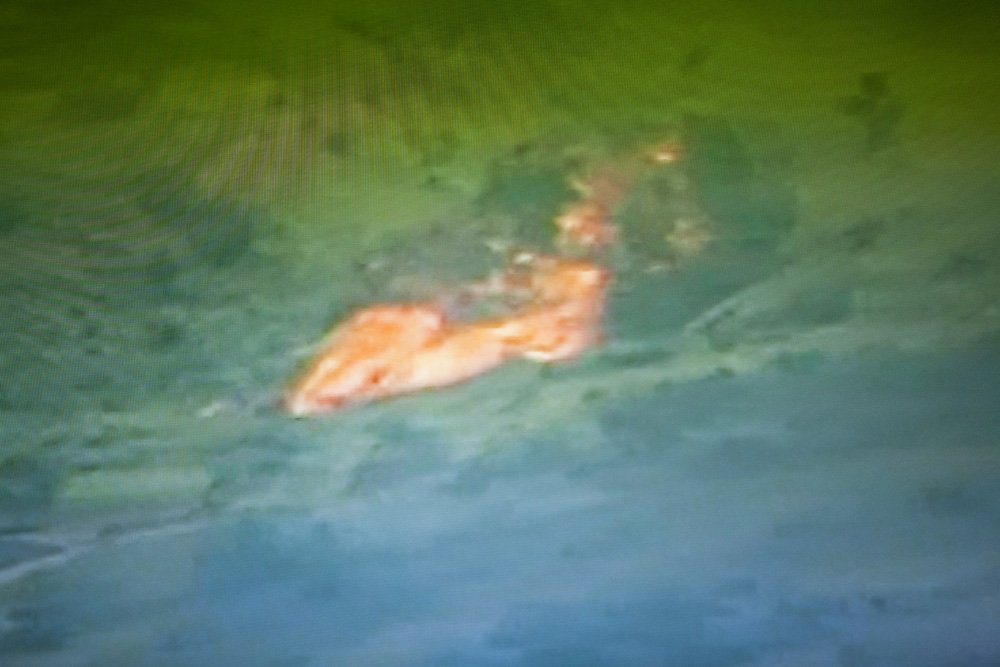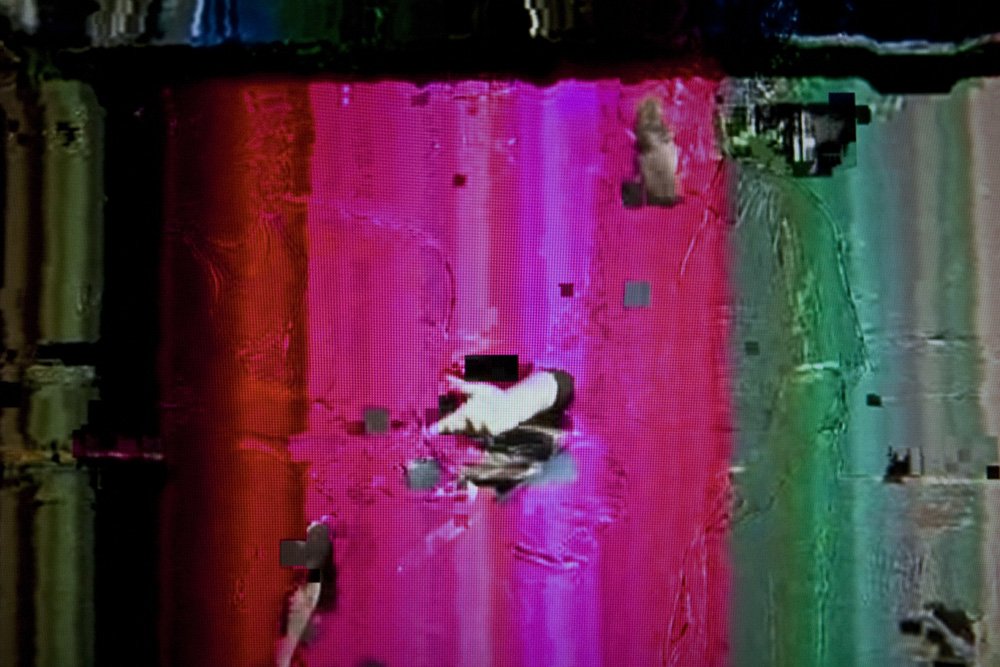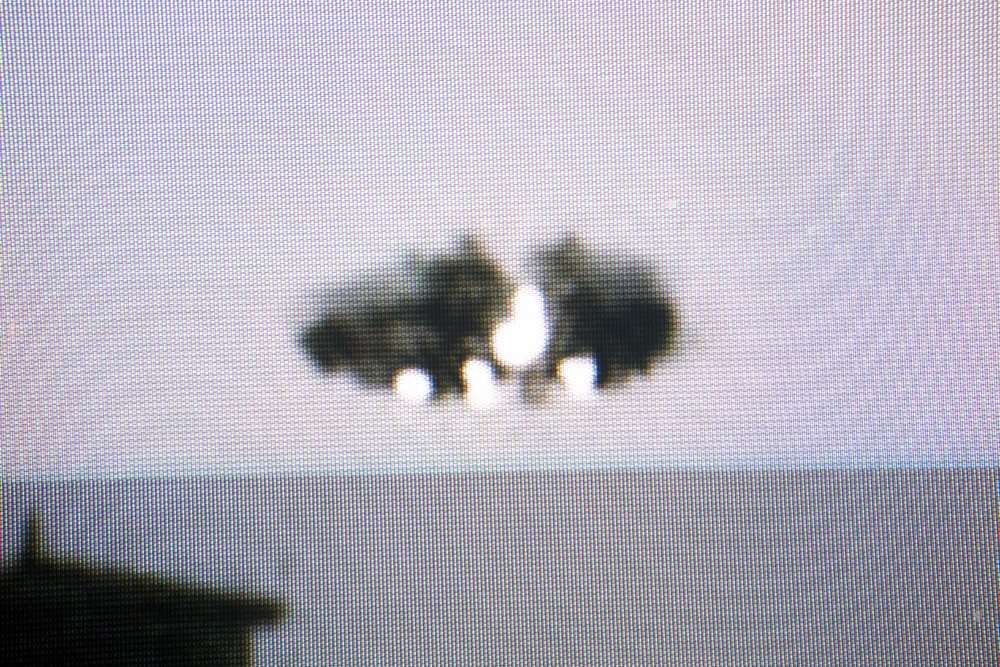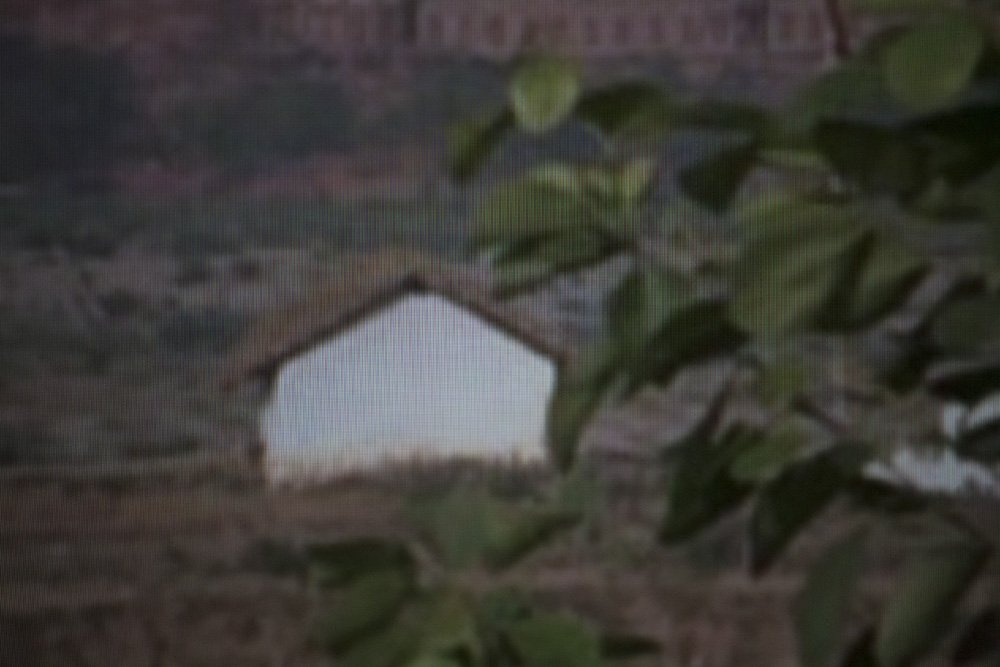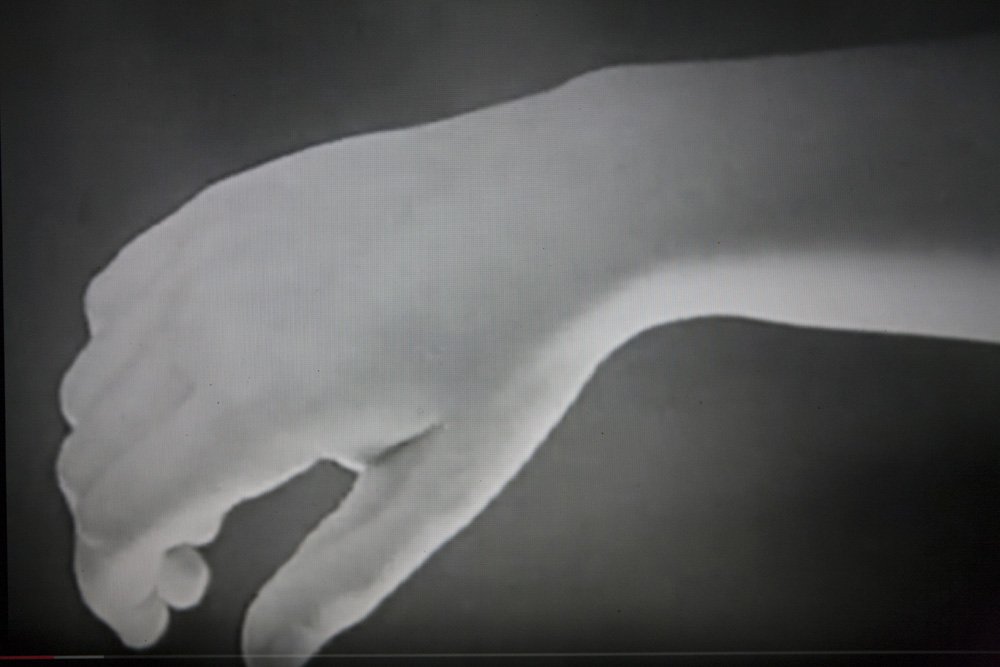Massimiliano Tommaso Rezza was born in 1967 and graduated in Pharmaceutical Chemistry in 1992. In 2010 he graduated in photography in Rome. His work has been presented in numerous collective and personal exhibitions.
Fotografia Europea (Reggio Emilia), Colli Independent Art Gallery (Rome), Photography Festival (Rome, 7th and 8th edition), Descubrimiento Photo Espana (Madrid), Su Palatu. In 2015 he published his first book for Yard Press. The book has aroused interest and several positive reviews from, among others, Gerhard Steidl (Steidl), Brad Feuerhelm (American Suburb X), Victor Mazière (Punto de Fuga, Paris), Antenne Books, PhotoBookStore, Ti Pi Tin, Nero Magazine, etc.
Die andere Seite is a project composed of photographs that overlap with the computer screen. The images, collected by Rezza for over three years, although estranged from their original source, preserve the ghost of an unexpressed violence, that of the rapture of images (maybe) or of the stories that we leave behind. Massimiliano does not edit the images; his intervention is limited to their selection and accumulation. They are not just isolated images, and, at times, Rezza decides to show entire sequences of stills whose character remains enigmatic.
With this project, the artist shows the mechanisms that govern the practice of framing and shooting. The photogenic dimension is detected here and used as a critical opportunity, for its aestheticistic nature, which is external to the flowing of Reality.
Daniela Cotimbo: In two years’ time you have collected over 1500 images from YouTube videos. What was the reason and the original interest in this material?
Massimiliano Tommaso Rezza: It was not an intellectual interest at all at first, but instead true compulsion. I took photographs of the computer screen to obtain images that would go beyond the limit of reality. This translation from compressed videos to photographic images seemed to cause a confusion between reality and imagination. When I realized that compulsion coincides with a state similar to hypnosis, then I started to get interested in the condition of the viewer, a state between rapture and nervous bulimia. In the images extracted from YouTube videos lie the mystery of the contemporary image itself, an image separated from its documental necessity. It seems that I was facing the root of contemporary Mannerism used by media. That empty, mysterious, indefinite beauty that can be spoiled for any purpose. The appearance of the images on the computer screen is an epiphany of the struggle between resistance of the reason and the state of capitulation provoked by the visual comfort of the user.
DC: Often you showed the need to treat this material as something organic, impossible to render in an accomplished only way…
MTR: All right, you have said it: organic and not accomplished, which also means integral, raw, native. To me, revealing, dealing, trying, experimenting, making, avoiding errors, adjusting, polishing, etc. are all actions that an idea has to go through in order to become a work or art. This, at least, in most cases. In general, in the facts, we are driven to create a definite, conclusive, ultimate product, and in doing so we have to leave behind all those actions that are also legitimate and necessary, and among these there is also some incoherence, some derailment from the subject we survey, some excursion into other fields adjacent to the area of our interest. In order to wrap a neat package, our declarative piece of art, we need to get rid of stranger solutions, which are stranger only if we have in mind that
the outcome has to become defined and in line with the current ratio that governs the artistic product.
I have always felt that this reasoning would not fit in with my way of proceeding in the making of a work. To me, any external fringe, any wandering around the idea that I had in mind at the beginning, and any detour are good, and have to be shown. In doing so I tend to underline the pragmatics that drives the artist to his final outcome. I find these mechanisms to be symptomatic of the market influence and of the current idea of the fruition of art. This is a true political issue. Because if the idea of the piece of art does not fit in with the expectations of the specialized public, it seems to be an invalid idea.
Only forcing an idea within the logic of the product are we able to obtain a piece of art that can catch the audience’s attention. I wonder what happens if the idea does not follow any rules and present all its extension in full evidence; if discarded photographs have the same legitimation of the good ones. The integral agency of an artist is, to me, more interesting that a polished product.
A work of art should open up a new path of language, to present internal cracks where other external influences can be revealed. This is why all the works I have produced up until now are made of thousands of photos. My final selection does not exist. I present the whole description of the idea, with its errors, with its incoherence, with its thematic derailments. It is not just an issue of integrity, but it is a way to find a new alliance with the public based upon a different type of recognition: art should provide more questions and should not indulge itself in providing answers. The new alliance with the public rests on the common perception of indivisibility and indiscernibility of the realm of language, ideas and reality.
In a few words I find that the idea of accomplishment should be let free of rules of production, of presentation, of self-branding and of the current logic of artistic products.
I have always liked more fragmented pieces of speech, of verse, than an accomplished and definite work. I like more unfinished novels than finished ones, more posthumous analysis of a work at large than the official thesis about a specific work. I like the open, unpredictable and fuzzy nature of reality, and I hope art helps leave it open for us to see.
DC: In some cases the photos that are part of your archive are single and unique, in other cases you have chosen to shoot a whole sequence of movements. What is your relationship with the moving image?
MTR: It is not the movement as such that interests me, but what photography is able to do with a moving subject. My perception of photography is quite primitive. I am still very impressed and amazed by the alienating nature of photography. The capability of stopping time, a thing that only photography is able to do, and it is an inhuman skill. The dream to stop time is divine dream. Showing quite a few photos in sequence depicting the motion of a subject has the purpose of underlining this alienating capability of photography. In a sequence of photos of a motion one feels a painful estrangement that borders on subversion.
And, then, the presence of a sequence is used as a pretext for presenting the doubt of the selection that the photographer has to undergo in order to obtain a definite editing, i.e. the final and refined photographic series, as I said before.
DC: Almost all the images of the archive have been chosen according to their photogenic requisites, except those deriving from the episodes of the public and private life of Hitler’s and Nazism’s universe.
MTR: No, on the contrary, especially the photos of Hitler and his gang were provided with a strong photogenic power that distracts from their content and their documental origin.
DC: For the Die andere Seite exhibition you chose to translate the archive into a book form. Why, what interested you in this medium?
MTR: Each product has its meaning and its use. Any product has, therefore, its politics of use. The photography book has recently been enjoying enormous success with the public and has also become a compulsory step for whoever wants to become an established photographer. The photography book boom has democratized the divulgation process, but has also shown the danger of conventionalism.
After my book Atem, I needed a break from the book fever. The Die andere Seite box containing ten booklets, has been produced in a series of three copies for art collectors only. I wanted to make to book unreachable. In this case, I thought about and used the socio-political exchange value of the book. The Die andere Seite box is a provocation.
DC: Is it possible, in your opinion, in light what it has been just said, to provide a precise definition of this photogeny that you refer to and that characterizes every shot?
MTR: Photogeny (which in English is also an old term for photography) is a condition of the form that does not prompt reflection but is able to produce an immediate pleasant feeling. Photogeny is the tool of the snake enchanter, of the Pied Pieper. Even though there are no precise instructions about how to obtain a photogenic image, the instinct, not the reason, can make sure that it is easily produced. Photogeny, therefore, is an efficient weapon, a powerful device. If applied to the right politics of the image it can make a whale, not just a camel, pass through the eye of a needle.
Hitler, a figure that generates fear and repulsion, can be disguised as a subject that conveys tender or poetic feelings.
Because of its deceiving power, Photogeny is the beginning and the end of the photographic art.
DC: Let’s focus on the amateur-like aspect of these images, in which the private, the common and the bizarre are emphasized by the isolation of the single frame. What is your relation with this almost visceral aspect of your work?
MTR: The amateur, because of his spontaneity in creating non-critical forms, benefits from a rare privilege, which is to be perceived and received as an ingenuous operator, harmless and truthful. The photo-amateur is not malicious and is not cunning by definition. He loves, which is in the etymology of his name, and he does not spoil anything.
If we concentrate on these thoughts about the amateur, and if we think they are right, we can easily deduce that an amateur image has a penetration power with the public that is far more effective than the professional’s image, which is usually sophisticated, articulated and often even inactivated by an excessive mannerism.
An amateur or amateur-like image can be used to be perceived as bearer of truth and spontaneity. This is a weapon embedded in the amateur-like form. The amateur image, if used consciously as a weapon, can easily reach the gut of the public and deposit there noxious, poisonous and dangerous material.
DC: Up until now you have always used photography in your work. Do you define yourself a photographer? If so, what defines the photographer’s work today?
MTR: If I say I am a photographer, they ask me if a have a studio. If I say I am an artist, they ask me how was the last Venice Biennale. Not having a studio and systematically deserting the Biennale, I have nothing left to say but that ‘I work with photography’, and this way it seems that I do bricolage as a hobby. I actually find bricolage much more fun than the other two activities.
To answer the second part of your answer, the photographer today knows that each image is not simply the calque of reality; he knows that his intervention modifies the recorded data and that translates them into a specific linguistic context. Surely today the photographer is more aware of the intervention he is going to provide in realistic data, while before, a few years ago, he was certain that his vision or point of view corresponded to the reality of the facts, and this position of his has unfortunately created too much confusion around the goal and political function of the photographer. Photographers are now surely more articulated and less didactic. They explore more the power of representations, and they feel to refer more generally to art and not just to the history of photography.
DC: Die andere Seite is a multiform project, have you already thought of the next step for it?
MTR: As for any work, Die andere Seite, should be translated into various site specific exhibitions. The next step is the create an exhibition that would self-install during the opening evening.
DC: What are you working on now? Can you tell us something in advance?
MTR: I am working on various projects. I often get lost. Anyway, more and more I am interested in the relation between artistic practice, class politics, the need to belong to a specialized group and the limited necessities of a niche, as those of contemporary photography. I would like to understand the mechanism of ‘in-group’ self-entitlement that filters and approves this or that work and how and why it does so. I want to understand if the artist is free to conjecture, experiment, or if the artist has incarnated the needs of his social group, to which his work is addressed, to the point that his action, from the very beginning, is vitiated by the connection between contemporary art practice and public’s response.
Understanding photographic practice first of all means making an analysis of the language used in photography to captivate the public. In my next works, but not all of them, I focus on the reason why photographs are adapted to this or that way of operating and how the idea of the outcome spoils the spontaneous process of creation. I think that the way an artist operates is the critical moment where the true purpose of creation reveals the politics, the intention and the group identity of such an act.
I, in the meantime, made some reportage works. In this case I wanted explore the language of this field of photography, exactly where aesthetics meets ethics, form meets politics. In these works all these issues are mixed up to question the camera and its use while recording reality.
–
copyright © Massimiliano Tommaso Rezza and PHROOM, all rights reserved
–



